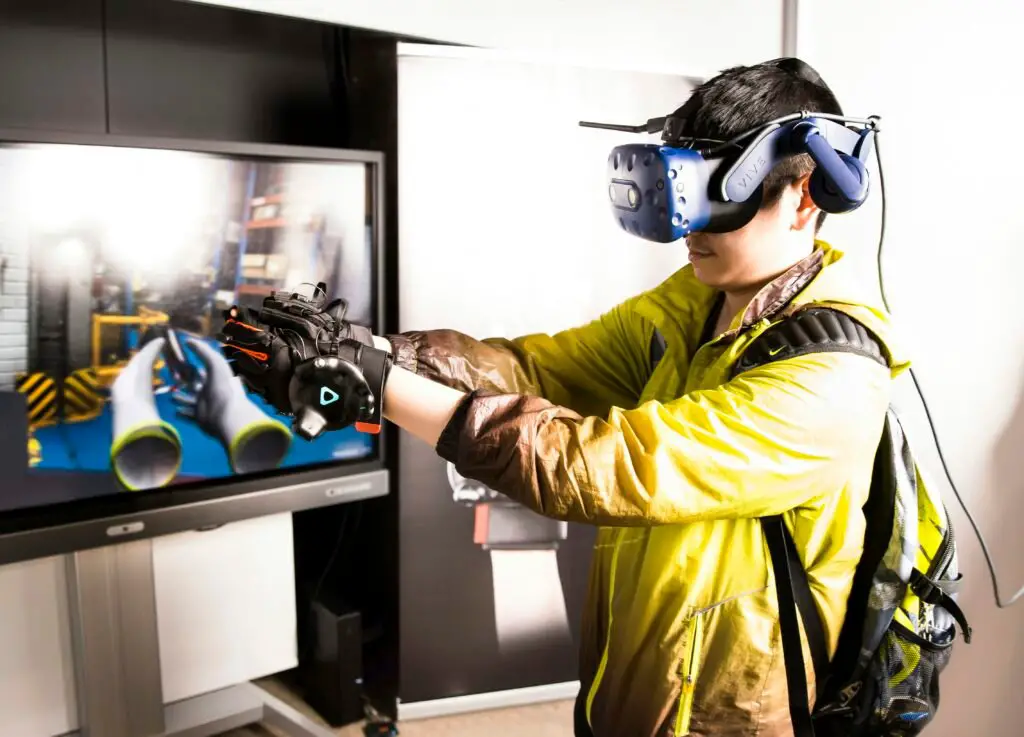
What is the Metaverse?
The metaverse is a collective virtual space that merges aspects of physical and digital realities, creating an immersive environment where users can interact, socialize, and engage in a plethora of activities. This multifaceted digital realm is not confined to gaming; rather, it encompasses a wide array of applications, including education, business, and social interactions. The concept of the metaverse is rooted in the integration of various cutting-edge technologies, such as virtual reality (VR), augmented reality (AR), and blockchain, which together foster engaging and interconnected experiences.
At its core, the metaverse represents the convergence of technology and human connection. It facilitates an environment where individuals can create, explore, and collaborate in ways previously unimaginable. Users can design their avatars, partake in virtual meetings, and even attend live events, all within a digitally constructed landscape. This virtual world not only mimics reality but enhances it, allowing participants to experience a sense of presence and togetherness regardless of physical distance.
The immersive qualities of the metaverse are magnified by its reliance on user-generated content and persistent environments. Users contribute to the digital ecosystem, creating everything from virtual goods to expansive landscapes. This continuous evolution of the metaverse underlines the significance of community and collaboration among its participants. Furthermore, the introduction of virtual economies enables users to trade and monetize their creations, leading to new avenues for entrepreneurship and economic growth within this digital sphere.
In essence, the metaverse is a pioneer of a new digital era, where the boundaries between reality and virtuality blur, fostering innovative social interactions and economic opportunities. Its foundational principles lay the groundwork for a transformative experience that has the potential to impact various aspects of modern life, shaping how we work, communicate, and entertain ourselves in the future.
How the Metaverse Works
The metaverse operates through a combination of advanced technologies that facilitate immersive and interactive virtual environments. At its core, the metaverse is built upon foundational elements such as blockchain technology, virtual reality (VR), augmented reality (AR), and intricate 3D modeling. These technologies synergistically work together to create an engaging user experience that extends beyond mere gaming.
Blockchain technology serves as a critical backbone for the metaverse, providing a decentralized and secure framework for transactions within virtual worlds. It enables digital ownership of assets in the form of non-fungible tokens (NFTs), allowing users to buy, sell, and trade unique digital items seamlessly. This decentralized ledger not only enriches the virtual economy but also enhances trust among participants in these shared environments, minimizing the potential for fraud.
Complementing blockchain, virtual reality and augmented reality technologies play a pivotal role in immersing users within the metaverse. VR headsets create fully immersive experiences, allowing users to navigate three-dimensional spaces with a heightened sense of presence. In contrast, AR integrates digital elements into the physical world, providing a hybrid experience that enhances real-life interactions. Together, these technologies enable users to engage with and experience the metaverse on various levels.
Furthermore, 3D modeling serves as the artistic foundation for the metaverse, allowing creators to design intricate virtual landscapes, structures, and characters. This creative process involves sophisticated software tools that produce high-fidelity visuals, enriching the aesthetic appeal and depth of the user experience. As these components interact, they sustain a constantly evolving virtual universe that emphasizes real-time interaction and social connectivity, ensuring that the metaverse is not only a place of exploration but also of collaborative engagement.
Virtual Reality (VR) vs. Augmented Reality (AR) in the Metaverse
Understanding the distinctions between virtual reality (VR) and augmented reality (AR) is essential for comprehending their roles within the metaverse. Virtual reality refers to a fully immersive digital environment that users can engage with through specialized hardware, such as VR headsets. In this setting, users are transported to entirely virtual worlds where they can interact with digital objects and other users as if they were physically present. This immersive experience is particularly relevant in gaming, educational settings, and virtual gatherings, allowing users to escape reality and explore creative new spaces.
On the other hand, augmented reality overlays digital information onto the real world, enhancing the user’s perception of their environment. AR technology typically relies on smart devices, such as smartphones or tablets, which utilize cameras and sensors to integrate digital content seamlessly with the physical world. This technology can enhance educational experiences, offer real-time data in practical applications, and provide engaging marketing strategies that bridge the gap between the virtual and real worlds.
Both VR and AR play complementary roles within the metaverse, catering to different user needs and experiences. VR connects users through shared immersive experiences, making it ideal for social interactions in virtual realms, while AR serves as a practical tool for enhancing daily life and engagement with one’s immediate surroundings. The integration of these technologies within the metaverse opens up an array of possibilities, impacting how users interact, learn, and experience digital content. By leveraging the strengths of both VR and AR, the metaverse can provide diverse experiences that cater to a wide spectrum of interests and applications.
Key Players in the Metaverse
The concept of the metaverse has attracted substantial interest from various stakeholders, with several key players leading the progress in this virtual landscape. Foremost among these is Meta Platforms, Inc., previously known as Facebook. This tech giant has declared its ambition to create an immersive social experience that transcends traditional interactions. Through its flagship product, Horizon Worlds, Meta is heavily investing in virtual reality (VR) technologies and augmented reality (AR) platforms, aiming to foster a rich ecosystem where users can connect, create, and share in ways that were previously unimaginable.
Microsoft is another major player in this realm, notably with its offering of Mesh, a platform designed to enable spatial collaboration. They focus on integrating the metaverse with practical business solutions, particularly through Microsoft Teams and Dynamics 365. Their vision centers around allowing people to work and collaborate in a 3D environment, thus enhancing productivity while retaining the essential human elements of interaction. This highlights a distinct approach, wherein the metaverse serves not just recreational purposes but also substantial professional applications.
Decentraland represents a different facet of the metaverse, advocating for a decentralized, user-owned virtual world. This platform empowers users to buy, sell, and trade virtual real estate through blockchain technology, thus creating a marketplace driven by its community. Decentraland’s emphasis on virtual land ownership and user-generated content illustrates the potential for economic expansion within the metaverse. Users can create unique experiences, shops, and art galleries, thereby contributing to a diverse virtual economy.
In summary, the metaverse is evolving with the active involvement of several influential companies. Meta, Microsoft, and Decentraland each bring unique capabilities and visions, collectively shaping a multidimensional future for virtual experiences, interactive marketplaces, and digital relationships.
Real-World Applications of the Metaverse
The concept of the metaverse has evolved significantly beyond its initial association with gaming, now permeating various sectors and offering innovative solutions across numerous applications. One of the most prominent use cases is in the realm of work environments. Many organizations are embracing virtual spaces to facilitate remote collaboration, allowing teams spread across different geographical locations to interact in immersive environments. Platforms like Spatial and Gather provide users with the ability to create virtual offices where avatars represent employees, ultimately enhancing communication and collaboration.
Education is another sector witnessing transformative changes due to the metaverse. Educational institutions are increasingly using virtual reality (VR) and augmented reality (AR) to augment learning experiences. For instance, students can explore historical environments, perform scientific experiments virtually, or interact with complex 3D models. Programs like ENGAGE and ClassVR emphasize experiential learning, enabling educators to create engaging curricula that better capture students’ attention and improve retention rates.
The real estate market is also harnessing the power of the metaverse to showcase properties and streamline transactions. Virtual property tours have become increasingly popular, allowing potential buyers to explore homes in a 3D format from the comfort of their own locations. Notable examples include platforms such as Matterport, which enables agents to create detailed virtual models of properties, enhancing the overall buying experience. This application of the metaverse not only increases accessibility but also saves time, as buyers can filter out options without the necessity of physical visits.
In summary, the metaverse presents a multitude of practical applications across various sectors, from enhancing the collaboration and learning experiences in work and educational environments to revolutionizing real estate transactions. As technology continues to advance, it is likely that the integration of metaverse solutions will further expand, offering even more innovative opportunities for organizations and individuals alike.
Social Interaction in the Metaverse
As technology continues to evolve, the metaverse is emerging as a transformative space for social interaction, reshaping the ways individuals connect and collaborate beyond traditional boundaries. Virtual worlds offer unique environments where geographical limitations are virtually eliminated, allowing people to engage in shared experiences regardless of their physical location. This revolutionary platform provides unprecedented opportunities for social networking, where users can gather in immersive settings to cultivate relationships and communities.
The concept of virtual gatherings is pivotal within the metaverse. These events range from casual meet-ups and celebrations to professional conferences and workshops. Participants engage through avatars, interacting and sharing experiences in a way that transcends the limitations often felt in conventional digital communication. This innovative approach fosters a sense of presence and belonging, enhancing connections among users who might otherwise remain isolated due to distances or societal barriers.
In immersive environments, individuals can collaborate on projects, participate in discussions, and exchange ideas in real-time, further blurring the lines between social and professional interaction. This transition to virtual platforms has significant psychological impacts, as users often report feelings of increased companionship and community support. The metaverse allows for the creation of diverse social networks where individuals can explore shared interests, skills, and identities, kindling a sense of unity that may be absent in purely physical spaces.
Moreover, the ability for users to engage anonymously or through thoughtfully curated avatars can lead to more open and expressive interactions. The metaverse thus becomes a haven for creative expression and identity exploration, enabling users to navigate their social lives on their own terms. Overall, the metaverse represents a paradigm shift in how we understand and engage in social interactions, providing tools that empower individuals to form connections that enhance their lives in meaningful ways.
Criticism and Ethical Concerns
The metaverse, while presenting unprecedented opportunities for social connection and digital innovation, has faced significant criticism and raised ethical concerns. One of the foremost issues relates to privacy. With the extensive data collection required for tailored user experiences, questions arise regarding how user data is managed, stored, and protected. The potential for misuse or unauthorized access to sensitive information within virtual environments is a significant concern that developers must address to ensure user trust and safety.
Security is another critical aspect that warrants scrutiny. The metaverse’s complex digital architecture can be vulnerable to cyberattacks, which may compromise not only personal data but also financial information and virtual property. As virtual worlds become more integrated with real-world economies, the ramifications of security breaches could have far-reaching effects, emphasizing the need for robust cybersecurity measures.
The digital divide further compounds these concerns, as access to the metaverse is often dictated by socioeconomic factors. Marginalized communities may find themselves excluded from these immersive experiences, leading to increased disparities in access to information, education, and economic opportunities. Addressing this digital divide is essential for creating a metaverse that is inclusive and representative of all demographics.
Mental health implications associated with prolonged engagement in virtual environments are also being scrutinized. Excessive immersion in the metaverse may lead to disconnection from reality, feelings of isolation, or addiction-like behaviors. Developers and companies bear a responsibility to promote healthy usage patterns and support mechanisms for users who may struggle with these issues.
Finally, as discussions around regulation and accountability evolve, stakeholders must advocate for ethical standards that prioritize user welfare. Collaborative efforts between developers, policymakers, and communities can foster safe digital environments that mitigate these concerns, ensuring the metaverse can be a vibrant, equitable space for all users.
Future of the Metaverse
The future of the metaverse is heralded by significant technological advancements that are set to reshape how individuals interact, work, and socialize in digital environments. As we stand on the brink of an unprecedented integration of virtual and physical realities, various trends suggest that the metaverse will evolve into an essential aspect of everyday life. Emerging technologies, including augmented reality (AR), virtual reality (VR), and artificial intelligence (AI), play a critical role in this transformation, enhancing user experiences and facilitating more immersive interactions.
One major trend is the anticipated convergence of various sectors within the metaverse. Industries such as education, healthcare, and entertainment are beginning to explore the potential applications of virtual environments. For instance, educational institutions are finding innovative ways to engage students through VR classrooms, while healthcare professionals are utilizing the metaverse for remote consultations and training simulations. This cross-industry integration suggests that the metaverse will not merely remain a recreational space but will evolve into a versatile platform that meets diverse needs.
User expectations are also expected to evolve as the technology matures. Increasing emphasis on personalization and user autonomy will likely lead to more user-generated content and customized digital experiences. As people seek more meaningful connections within the metaverse, platforms that prioritize community-building and engagement will become more prevalent. This shift reflects a broader societal desire for connection, suggesting that future iterations of the metaverse may emphasize social interaction and collaboration over traditional gaming.
As these trends unfold, the potential for innovative experiences within the metaverse appears limitless. From virtual workspaces that replicate in-person collaboration to entirely new forms of entertainment that blend storytelling with interactive gameplay, the possibilities are incredibly diverse. The future of the metaverse will undoubtedly bring profound changes to how we think about our interactions, both online and offline, making it a space worth watching closely.
Getting Started with the Metaverse
Exploring the metaverse can be an exciting venture, especially for those new to this expansive virtual world. To begin your journey, it is essential to identify suitable tools and platforms that cater to various interests and experiences. Some of the prominent platforms include Decentraland, Roblox, Horizon Worlds, and Second Life, each providing unique environments and opportunities for interaction.
Before you dive in, creating a personal avatar is a fundamental step. Most platforms offer user-friendly interfaces for avatar creation, allowing you to customize appearances, clothing, and accessories. Your avatar serves as your representation in the metaverse, enabling you to engage with others, explore different worlds, and participate in activities. Investing time in avatar customization can enhance your overall experience, making it more authentic and enjoyable.
Once your avatar is ready, the next step is joining virtual communities, which can be an enriching experience. Many platforms have forums or social spaces where users gather to discuss interests, participate in events, or collaborate on projects. Engaging with these communities can help you build connections, learn from others, and discover new aspects of the metaverse that may resonate with your interests.
Finally, don’t hesitate to participate in various experiences available in the metaverse. From virtual concerts and art galleries to gaming and social meetups, the options are vast. These experiences are not just entertaining; they can also be educational, offering insights into new technologies and social dynamics. By immersing yourself in these activities, you can enhance your understanding and appreciation of the metaverse, making your exploration both enjoyable and rewarding. As you embark on this journey, remember that the metaverse is continuously evolving; staying curious and open-minded will serve you well.

cojub It could cover a range of topics related to health, wellness, beauty, personal growth, and social issues, all from the perspective of striving for beauty, intelligence, youthfulness, and impartiality




Add comment